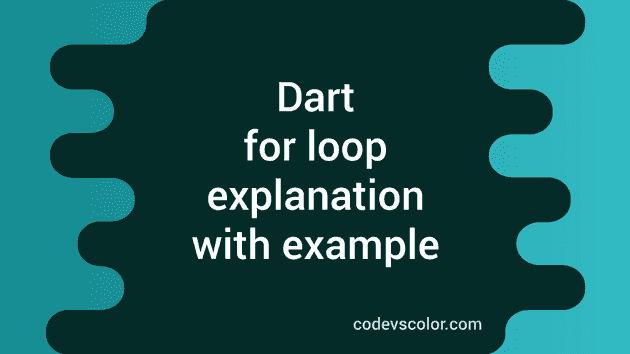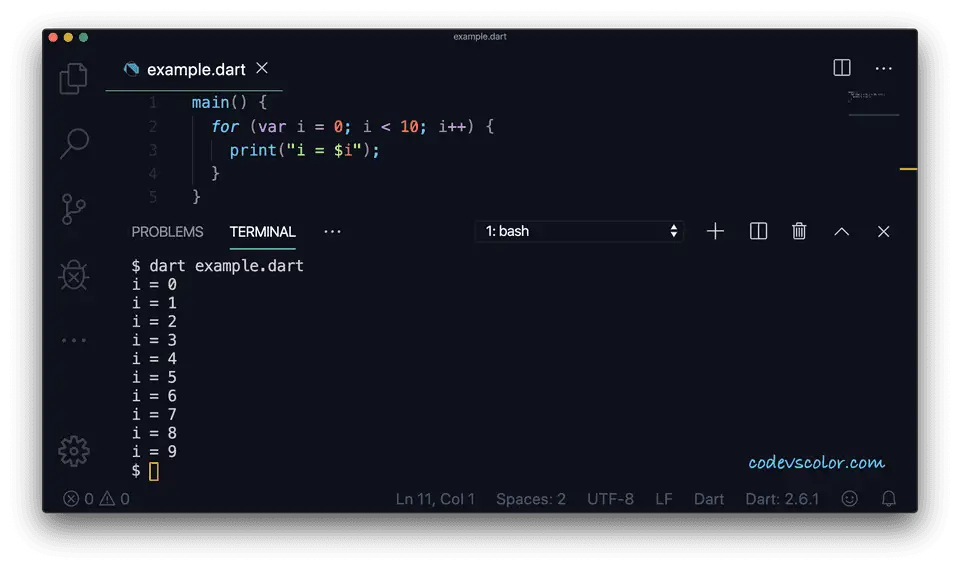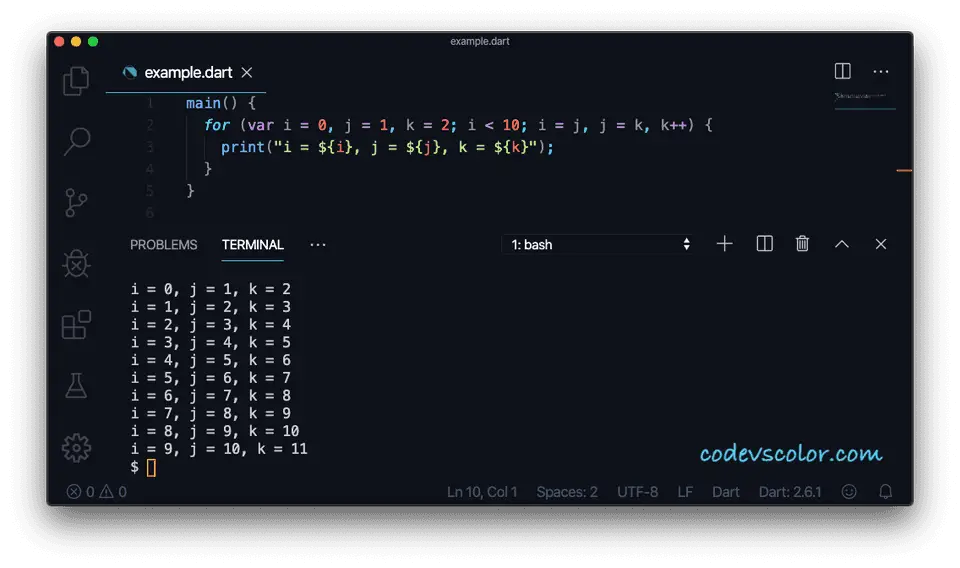for loop in Dart :
for loop is used to execute a piece of code for a specific amount of time. This amount of time is defined by a condition. It will keep executing the code until the condition is true.
for loop can also be used for iteration. You can iterate through a set of values like list, set, characters of a string etc. using a for loop.
In this tutorial, we will learn how to use dart for loop with examples.
Syntax of for loop :
The syntax of a for loop is as below :
for(initialization, exit_condition, loop_end_step){
// code to execute
}
Here, initialization: It is the initialization part. Normally, one variable is created with an initial value. This part is executed at the start of the loop and only for once. exit_condition: This is a condition to check at the end of each iteration of the loop. The next iteration of the loop will start only if this condition is true. This condition is linked to the variable that is created on the first initialization step. loop_end_step: This is the step to execute at the end of each iteartion. This step is used to change the value of the variable.
For example :
main() {
for (var i = 0; i < 10; i++) {
print("i = $i");
}
}
It will print the value of i on each iteration.
Here, var i = 0 is the initialization step. It initialized one variable i with 0 as its value.
i < 10 is the exit condition. This loop will run until this condition is true.
i++ is loop end step. This part will run at the end of each execution of the loop.
So, this loop will run from i = 0 to i = 9 with 1 increment on each step.
for loop with multiple variables :
We can run one for loop with more than one variables. Initialize these variables by separating them with comma and change them in the loop end step :
main() {
for (var i = 0, j = 1, k = 2; i < 10; i = j, j = k, k++) {
print("i = ${i}, j = ${j}, k = ${k}");
}
}
Here, we have three variables with three different end conditions. This loop will run until the value of i is less than 10.
It will print the below output :
i = 0, j = 1, k = 2
i = 1, j = 2, k = 3
i = 2, j = 3, k = 4
i = 3, j = 4, k = 5
i = 4, j = 5, k = 6
i = 5, j = 6, k = 7
i = 6, j = 7, k = 8
i = 7, j = 8, k = 9
i = 8, j = 9, k = 10
i = 9, j = 10, k = 11
Nested loop :
If we run one for loop inside another, it is called nested for loop. For example :
main() {
for (var i = 0; i < 3; i++) {
for (var j = 0; j < 3; j++) {
print("i = ${i}, j = ${j}");
}
}
}
This will print the below output :
i = 0, j = 0
i = 0, j = 1
i = 0, j = 2
i = 1, j = 0
i = 1, j = 1
i = 1, j = 2
i = 2, j = 0
i = 2, j = 1
i = 2, j = 2
For each iteration of the outer loop, the inner loop will run once. Inner loop increases the execution time. You can have infinite number of inner loops.



